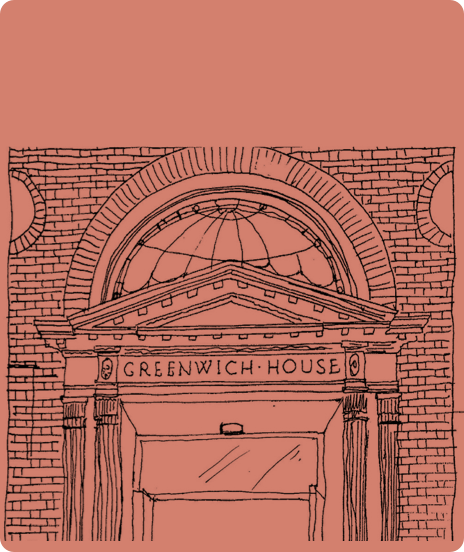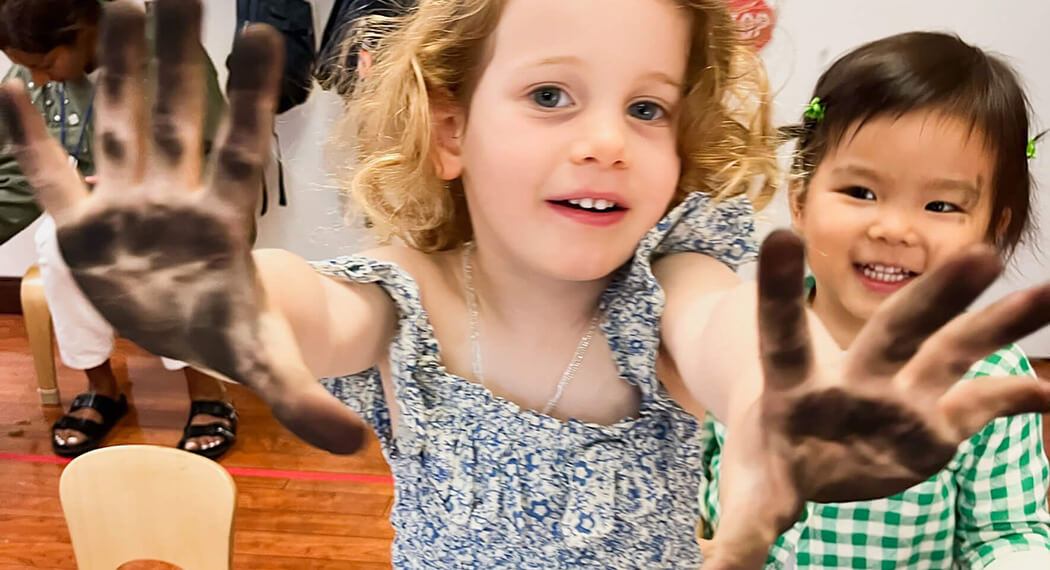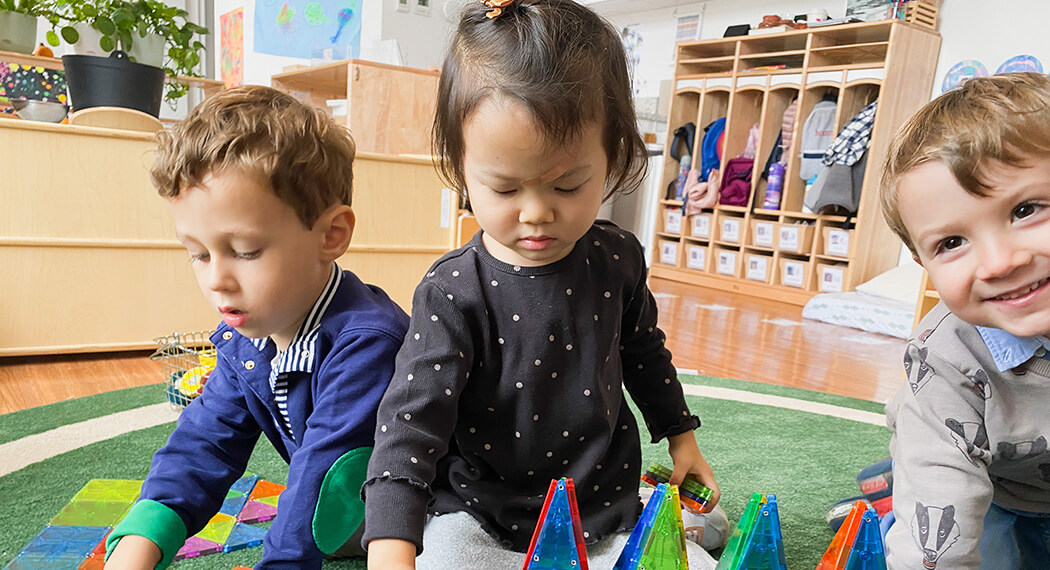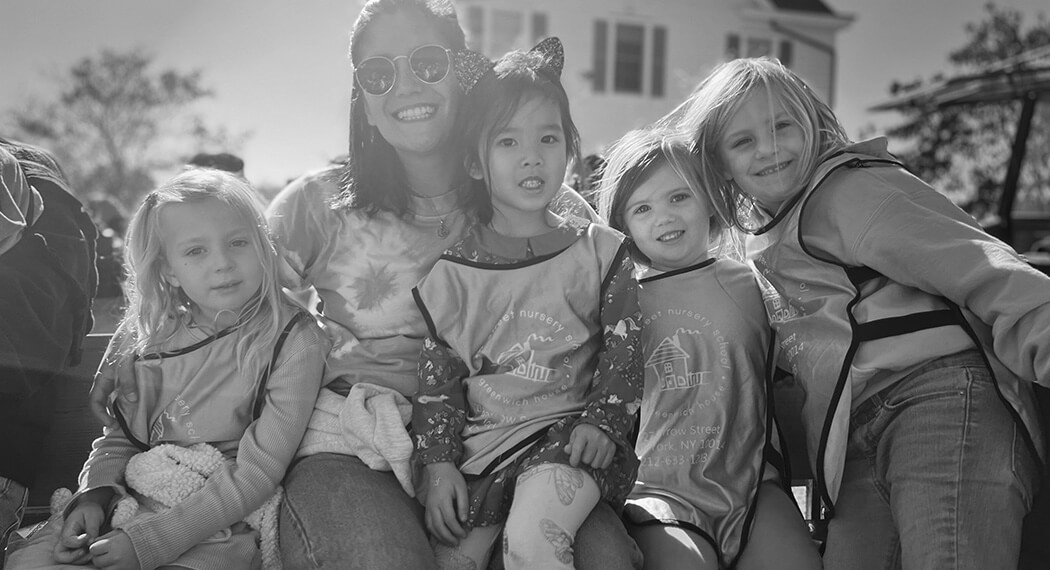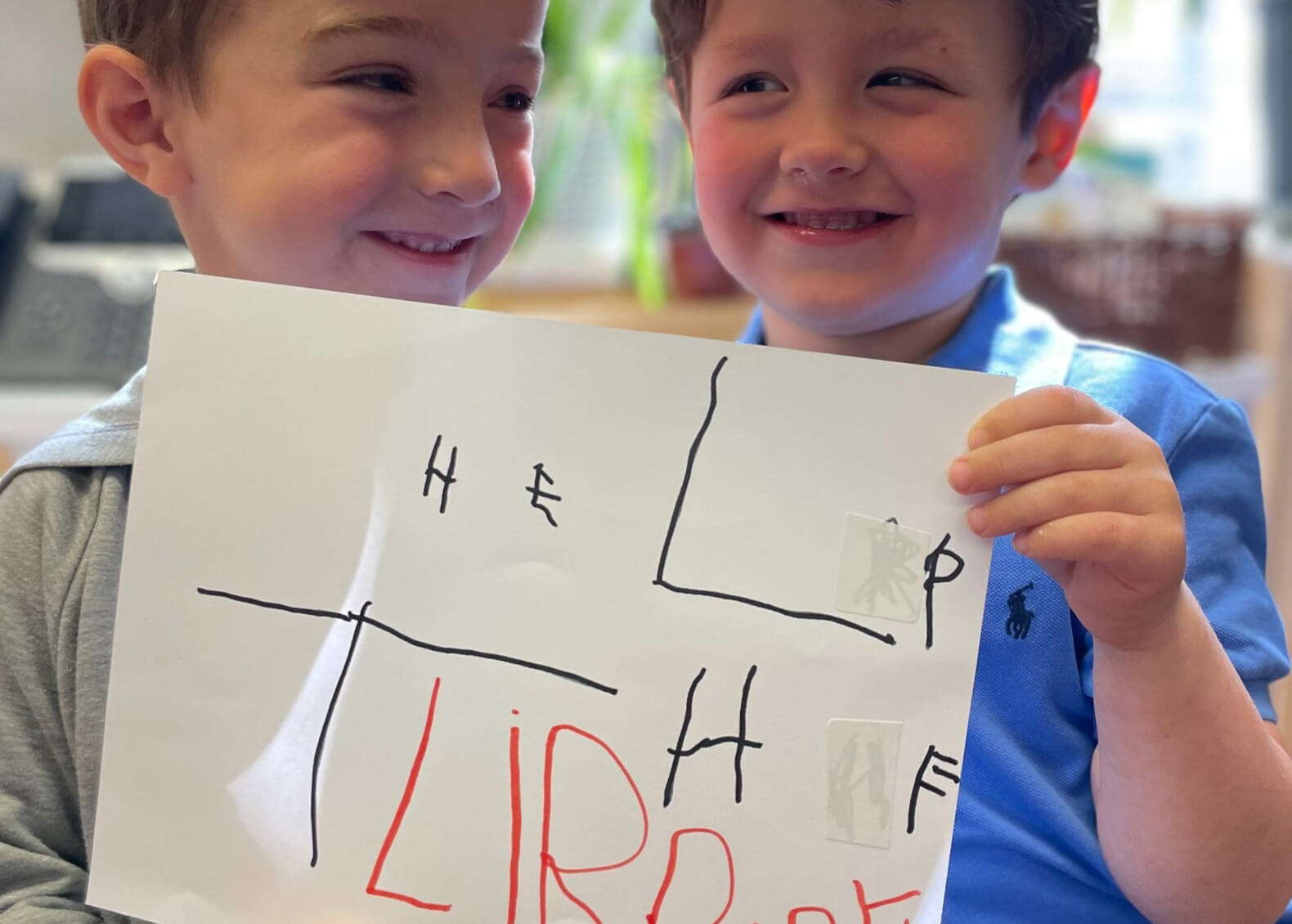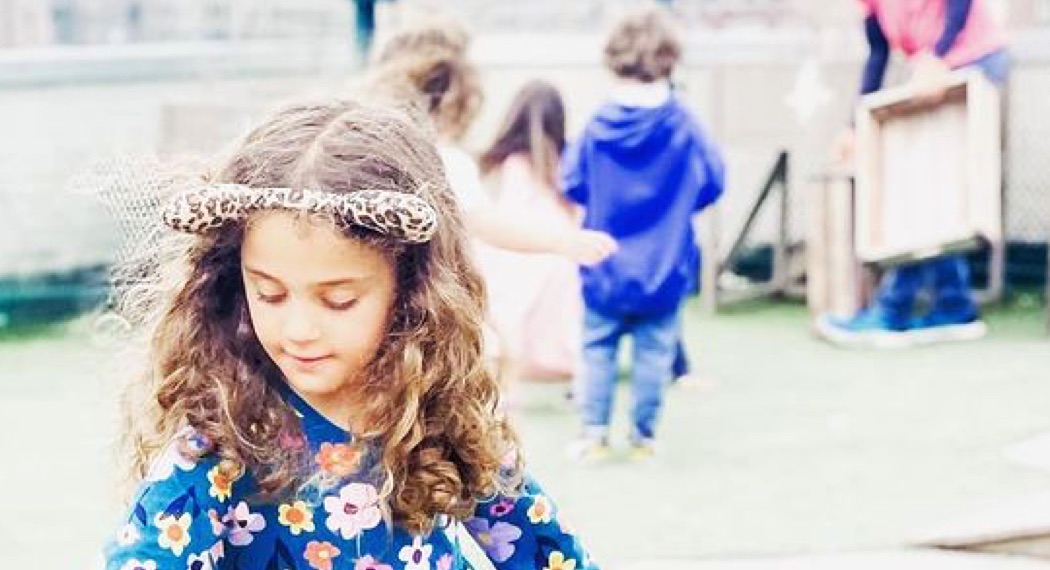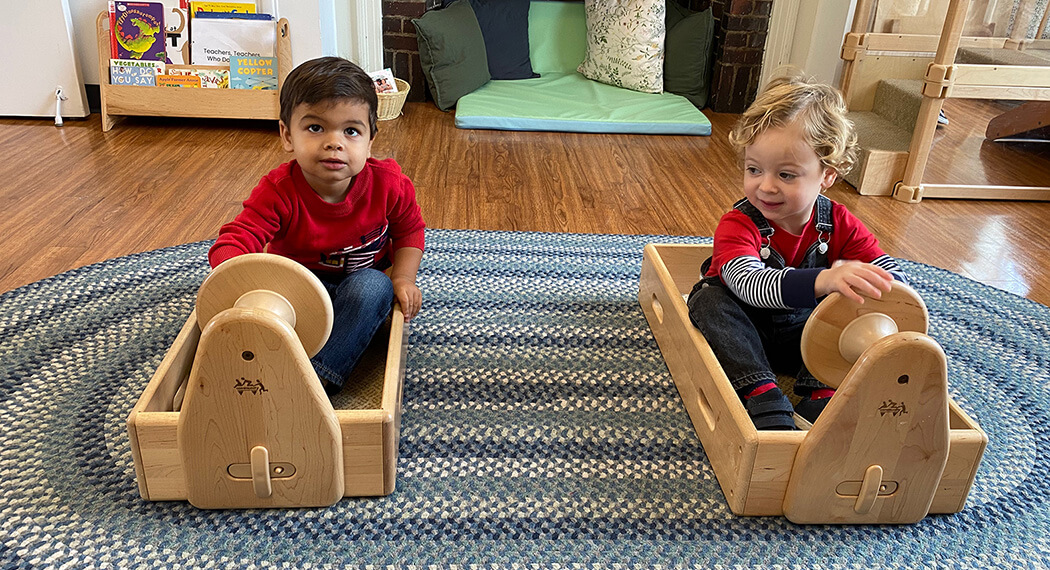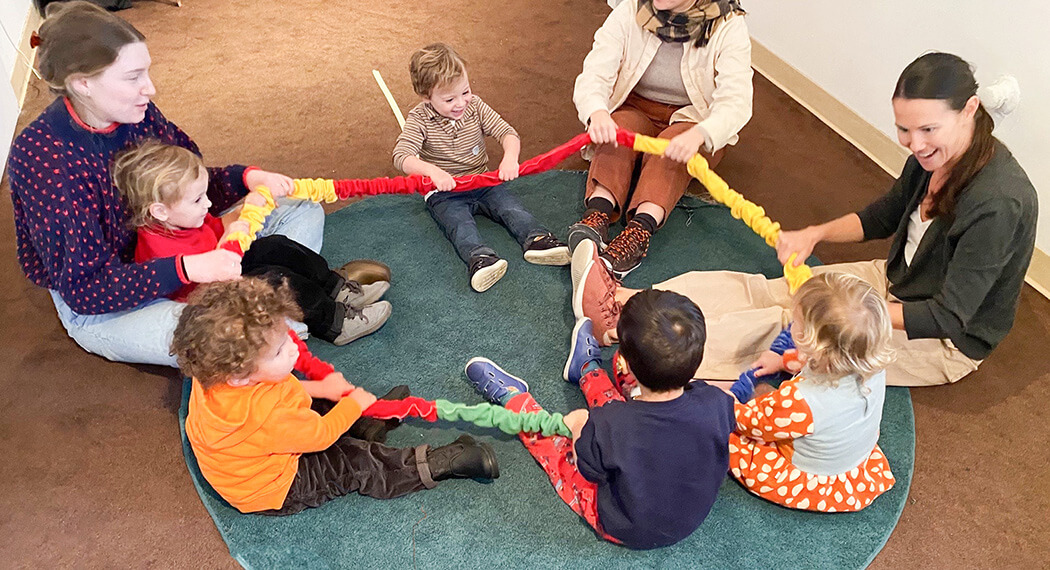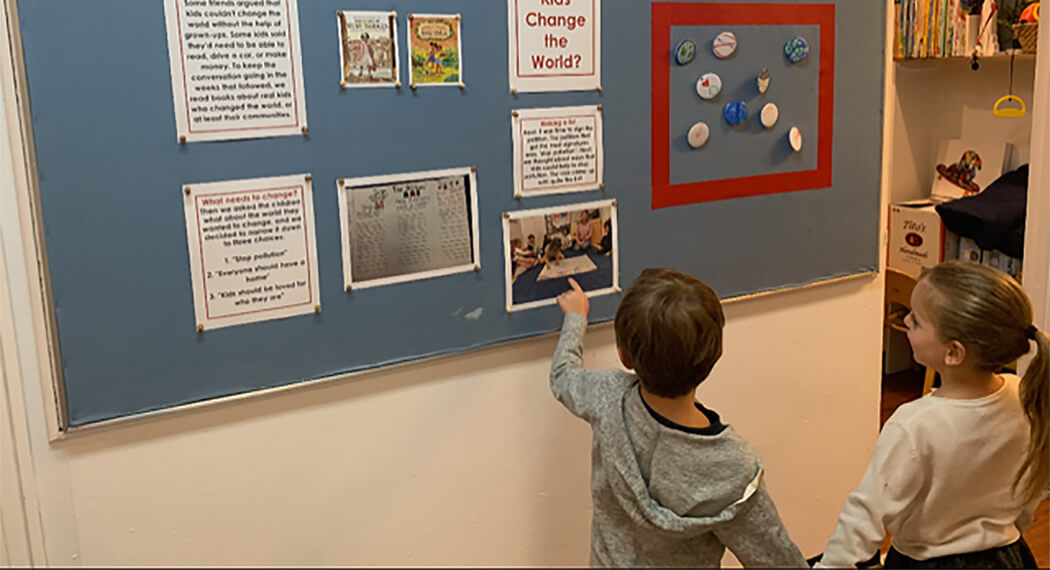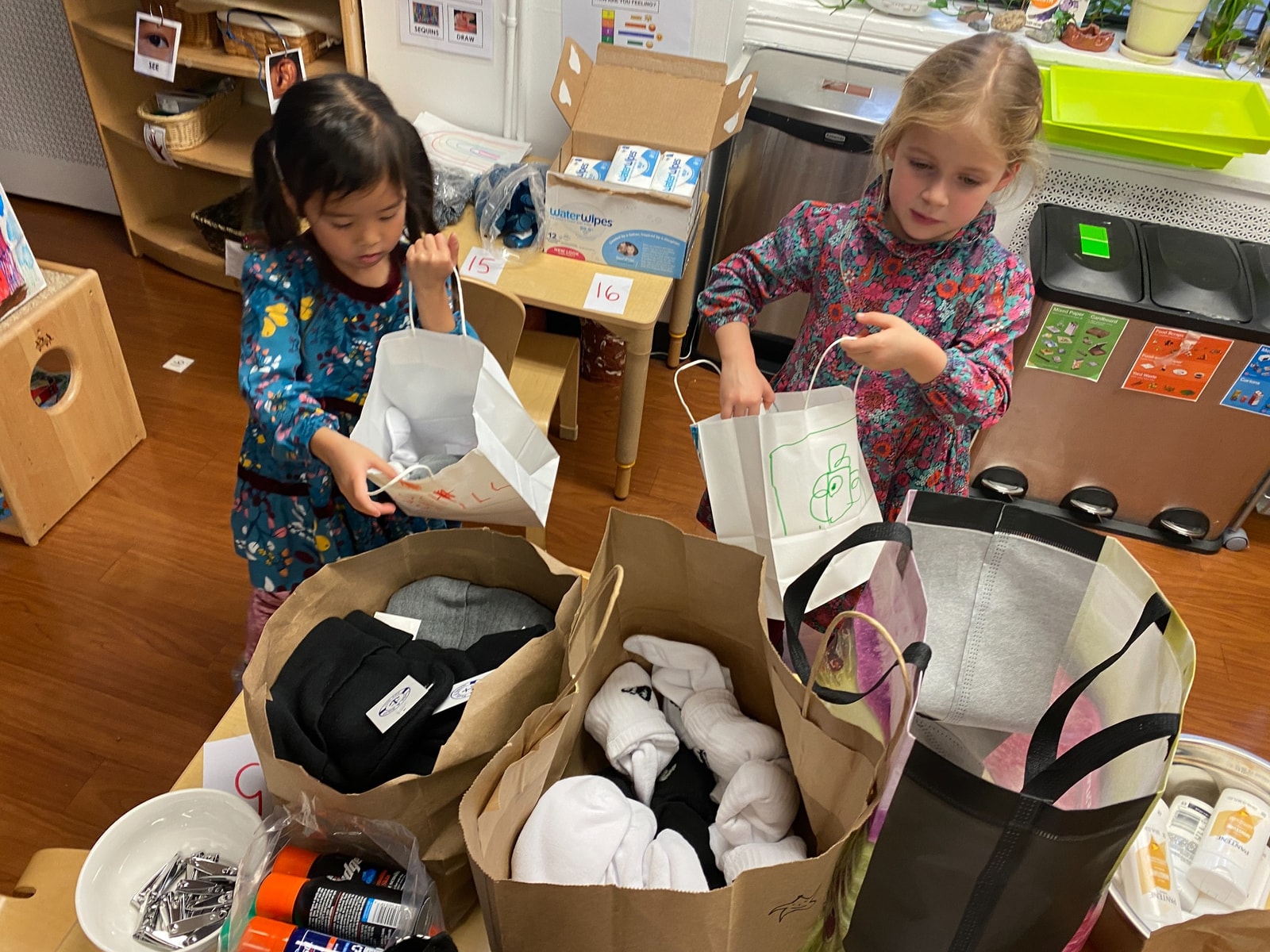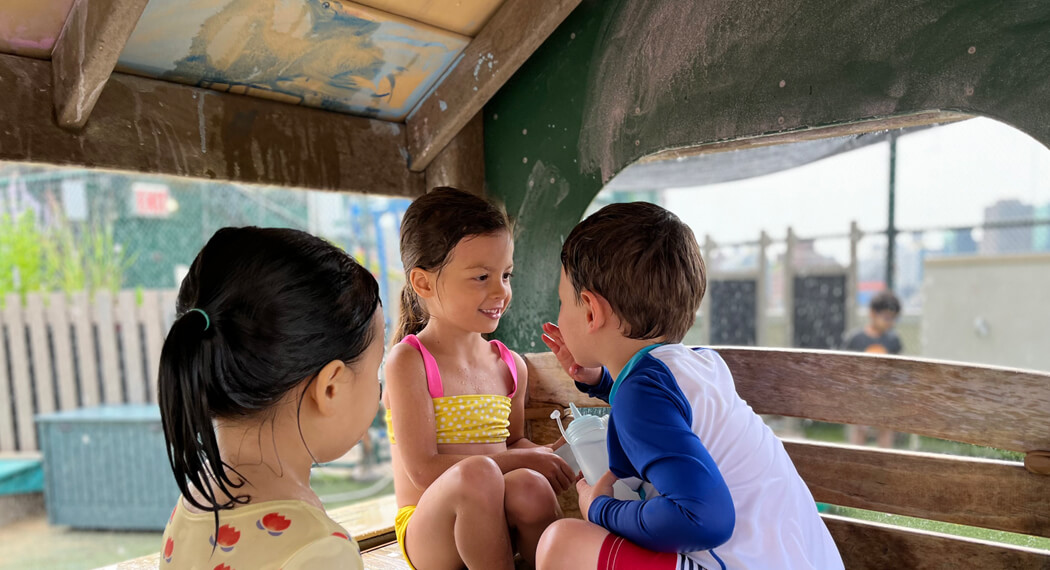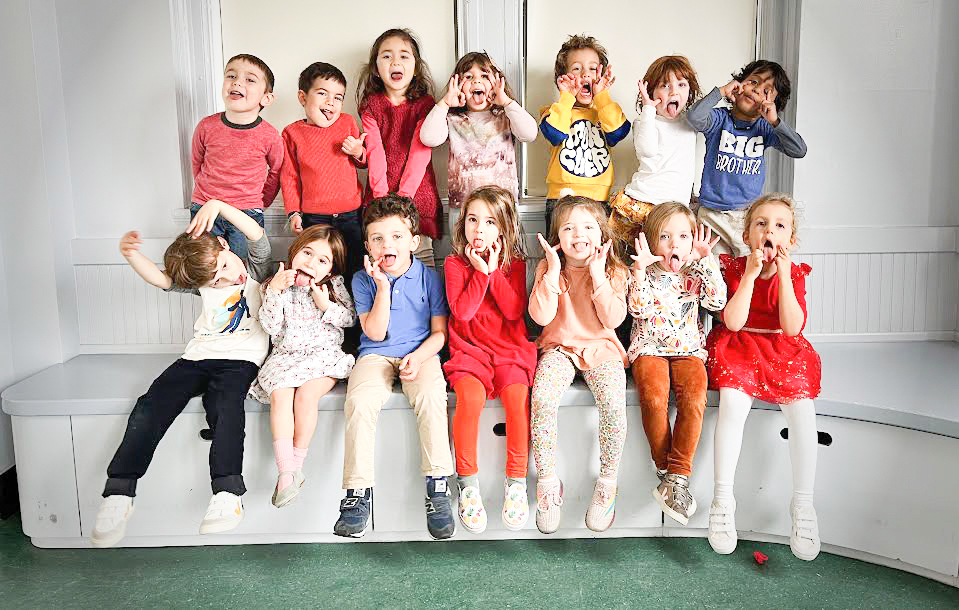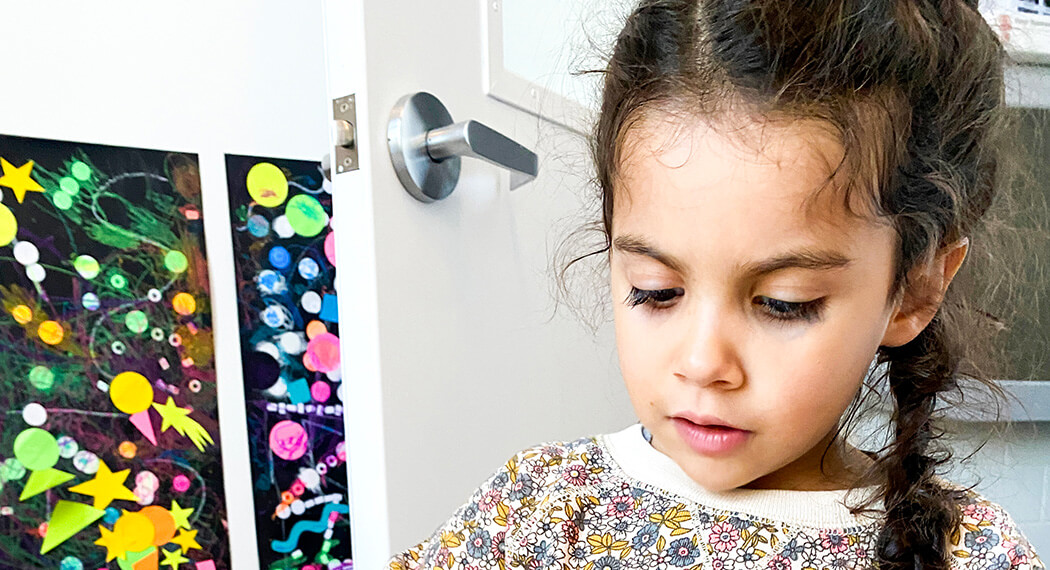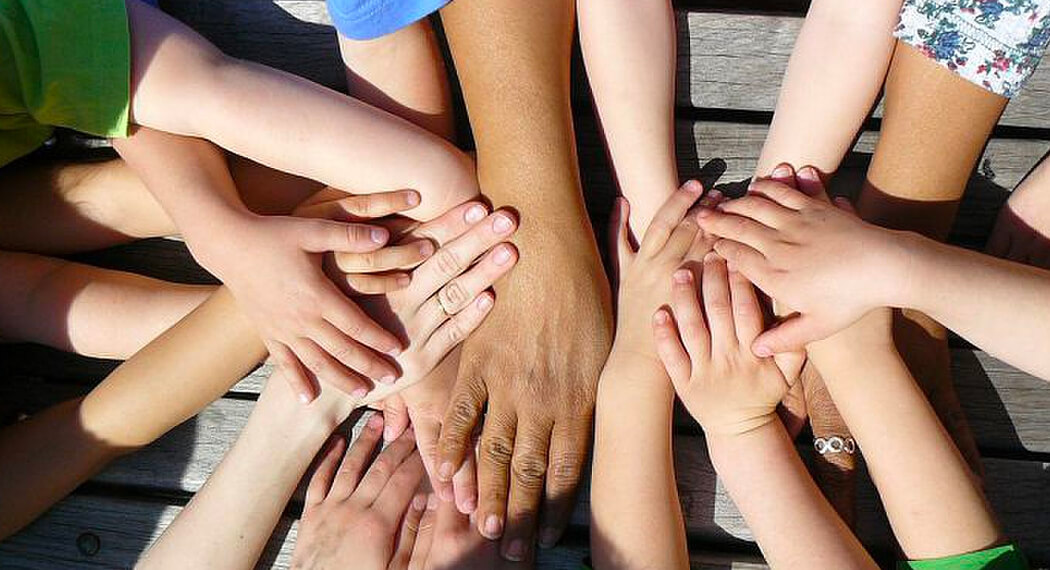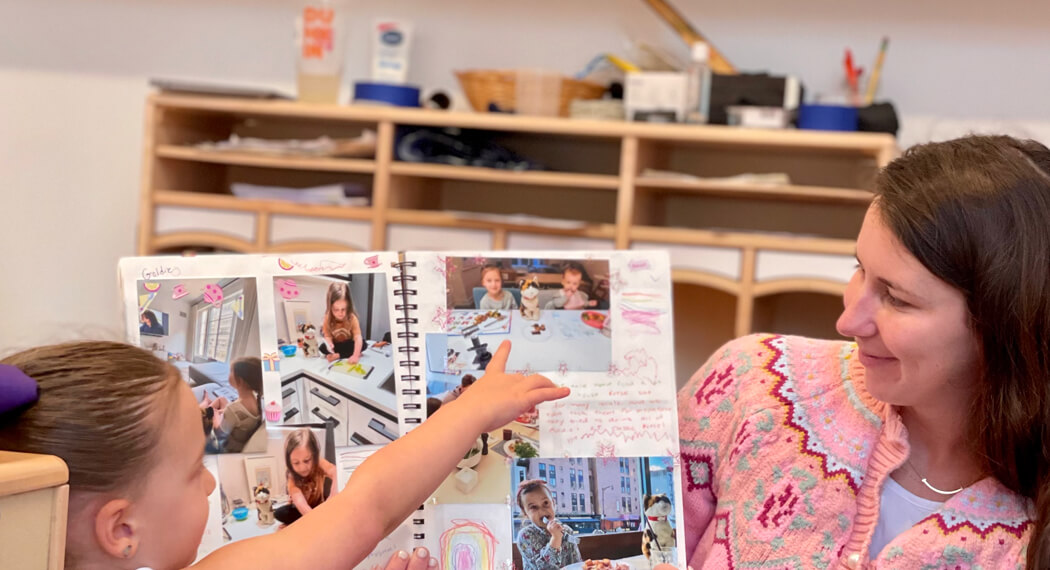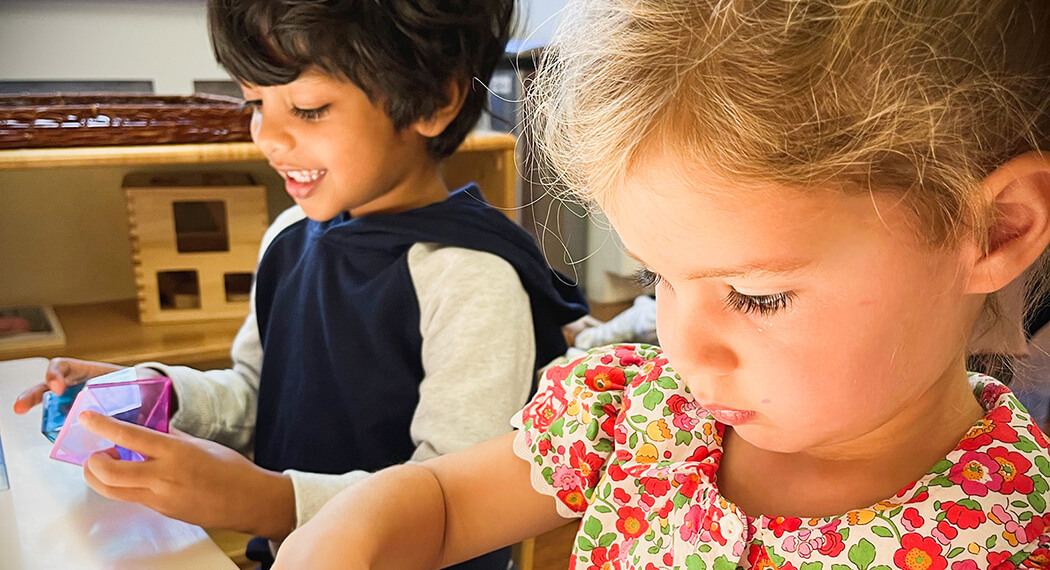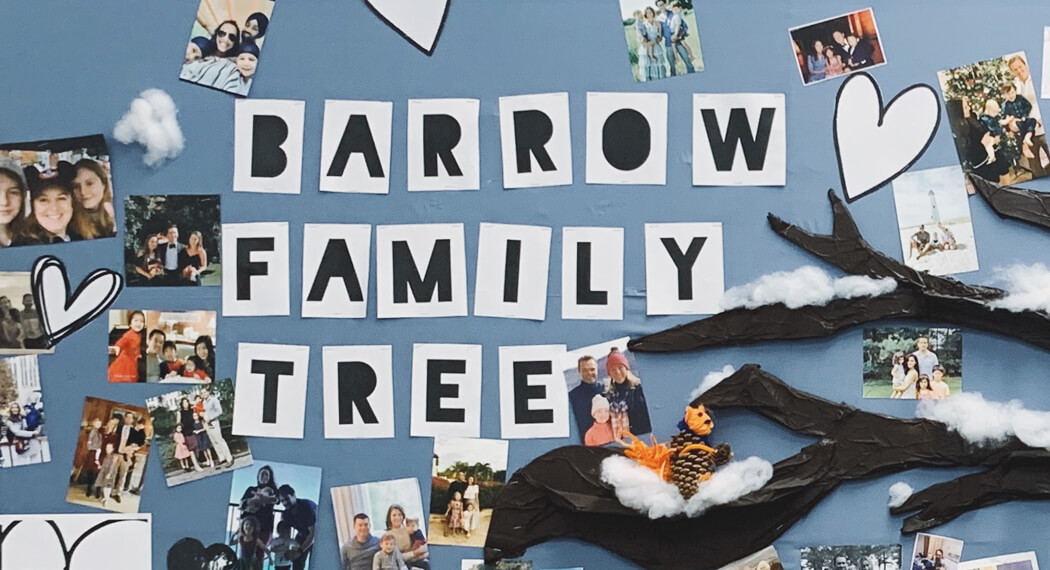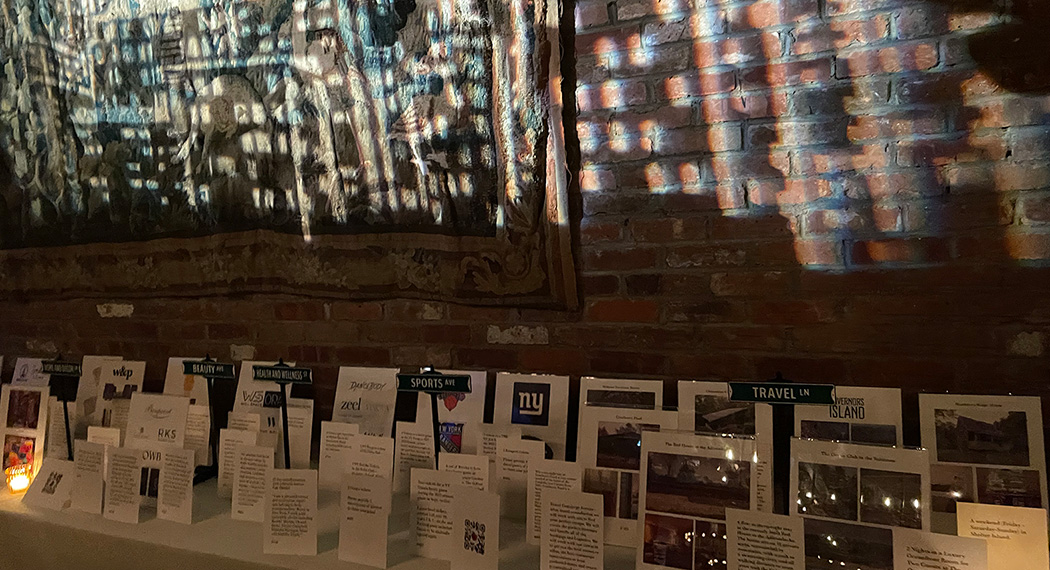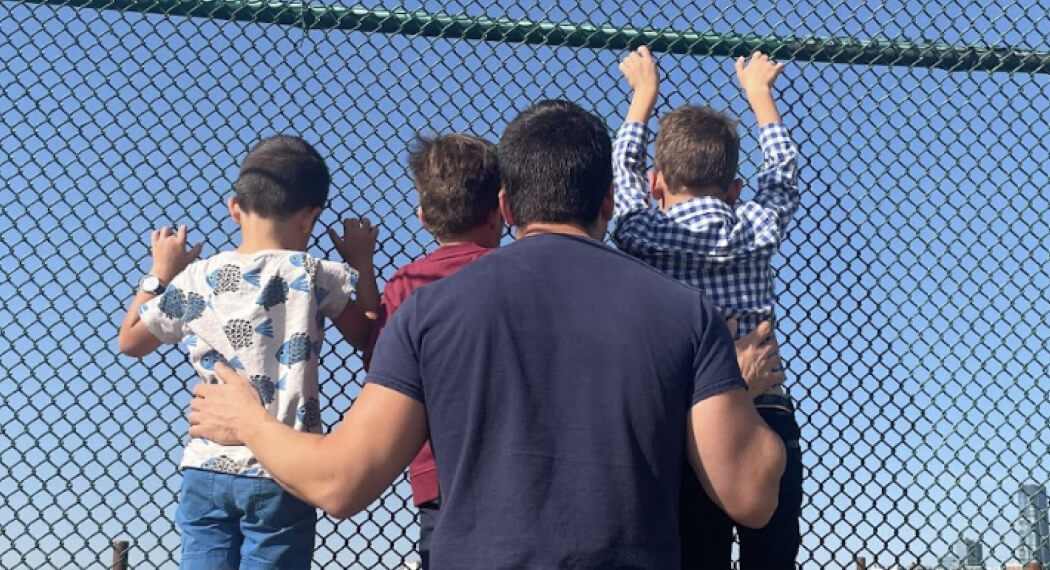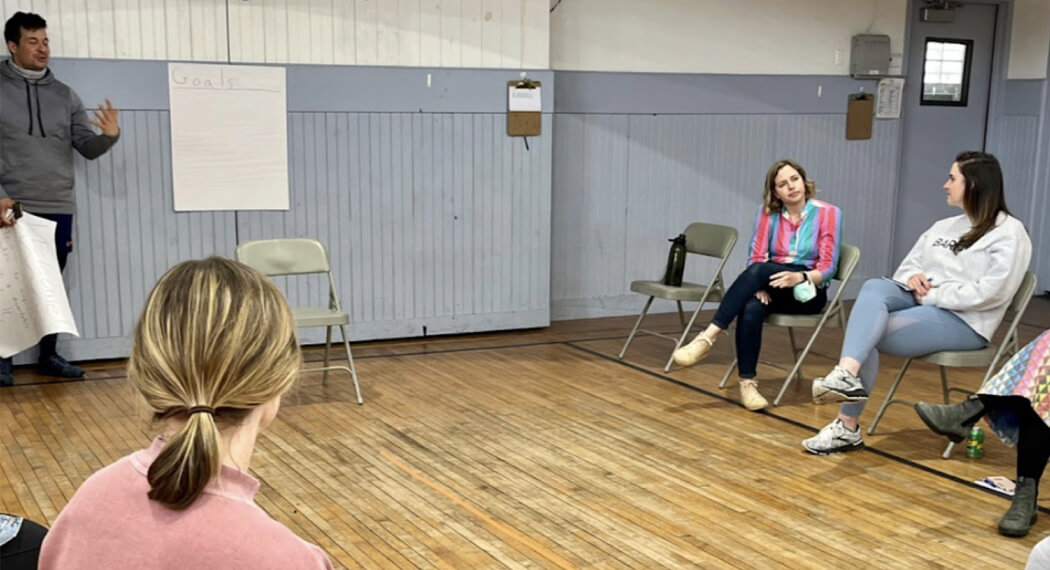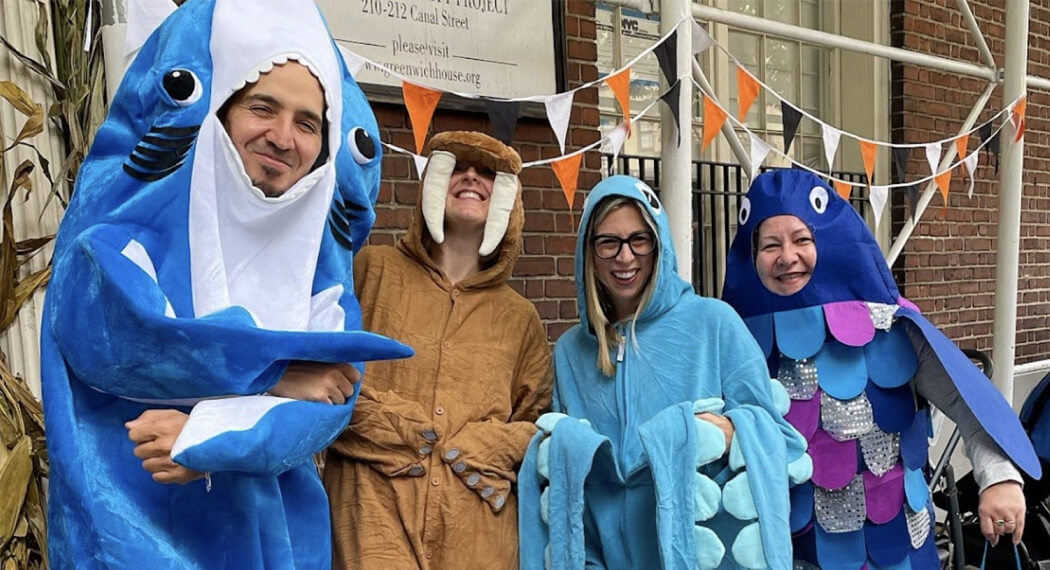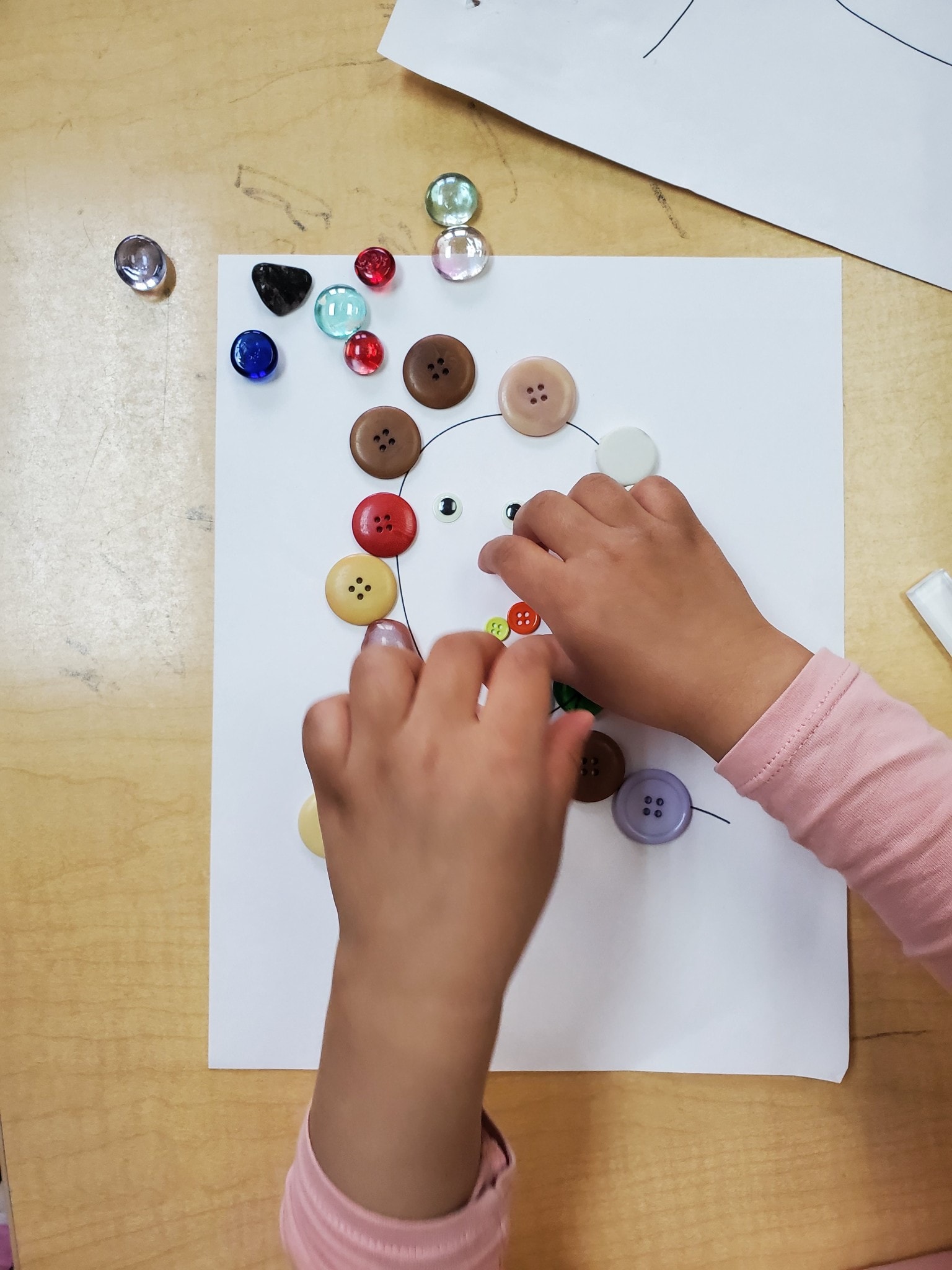The Zombies found a new provocation at the table when they arrived Monday morning. There was a tray of loose parts, including googly eyes, tiles, gems, and buttons. There were also sheets of paper that had an outline of a head/neck.
We had actually used these head-outline papers earlier in the year for a drawing exploration. We were curious to see how the Zombies would return to them, but with loose parts this time.
One benefit of loose parts, as opposed to materials like crayons or markers, is that you can rearrange your work multiple times. Indeed, we saw the Zombies taking advantage of this aspect, shifting the loose parts on their paper to add new details, incorporate inspiration from peers, and try out different ways of creating something. There is less focus on the “perfect” or “right” way to do something, because you can always make a change.
This provocation incorporated many different curriculum threads that we have been working on throughout the year, including storytelling, feelings/emotions, shapes, and representation.
Storytelling:
“This is a superhero. He has a crown. He also has wings and arms.”
“This is my daddy. My daddy has eyes, nose, and a mouth. My daddy has hair.”
Feelings/Emotions:
“This [the small red button] is the heart. These [the larger brown buttons] are big, and they protect the heart.”
Representation and Shapes:
A face has two eyes, a nose, and a mouth
Some bodies have two arms
“How can I make a mouth?”
Building out the body
“This is the brain”
Creating a triangle-shaped nose out of rectangle tiles
Inside/Outside (Part/Whole)
What goes inside the outline of the head and what goes outside? Who is more focused on the arrangement and aesthetics of the loose parts, and who is more focused on representation?
Combining Shape and Color
Some children decided to layer the loose parts on top of one another. Above left, three gems are layered on top of a rectangle tile to create a mouth with teeth. Above right, two googly eyes sit on top of two buttons.
Below, another interesting idea emerged. The child who created the face on the left said, “The mouth is this shape [indicating tile], but mouths are this color [indicating red gem].” The child who created the face on the right said, “My eyes are blue. They look like this [indicating googly eyes].”
These children encountered a problem: they couldn’t find a loose part that had both the color and shape they needed. So, they selected one loose part to highlight the shape they had in mind, and another to highlight the color.
What do you notice as you look through these faces?

